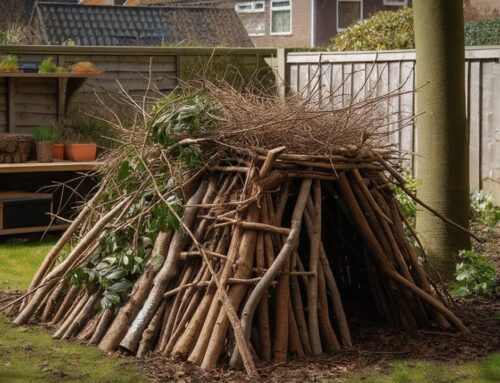This article delves deep into the world of natural construction materials, shedding light on their benefits, practical applications, and the various types available. As urbanization continues to expand, there’s a pressing need to revert to nature for solutions that are both environmentally friendly and economically viable. By the end of this article, readers will have a comprehensive understanding of the importance of natural materials in construction, their advantages over synthetic alternatives, and how to effectively utilize them in building shelters.
Using Natural Materials to Build Your Shelter
Table of Contents
- Benefits of Using Natural Materials
- Types of Natural Materials
- Practical Applications and Examples
- Frequently Asked Questions
- Final Thoughts
- Sources
Benefits of Using Natural Materials
Natural materials offer a plethora of advantages over their synthetic counterparts:
- Sustainability: They are renewable and have a lower carbon footprint.
- Thermal Insulation: Natural materials often provide better insulation, keeping interiors cool in summers and warm in winters.
- Cost-Effective: In many regions, sourcing natural materials is cheaper than manufactured ones.
- Aesthetic Appeal: They offer a unique, rustic look that’s hard to replicate with synthetic materials.
- Health Benefits: Natural materials don’t emit harmful chemicals, ensuring a healthier living environment.
Types of Natural Materials
Stone
Stone has been used for centuries in construction. It’s durable, fire-resistant, and offers excellent insulation. Different types of stones, like granite, limestone, and slate, have their unique properties and applications.
Clay and Mud
Clay and mud are abundant and have been used in constructions like adobe houses. They are excellent insulators and can be molded into various shapes and sizes.
Wood
Wood is versatile, renewable, and has a natural aesthetic appeal. Different types of woods, like pine, oak, and cedar, have varied strengths and applications.
Bamboo
Bamboo is strong, flexible, and grows rapidly, making it a sustainable choice. It’s used in many Asian countries for constructing houses and bridges.
Straw
Straw bale construction is gaining popularity due to its insulation properties. It’s also a byproduct of grain farming, making it a sustainable choice.
Practical Applications and Examples
- Stone Cabins: Found in mountainous regions, these cabins utilize the natural insulation properties of stone.
- Adobe Houses: Common in South America, these houses use clay and are known for their unique appearance and insulation.
- Log Cabins: Made entirely of wood, they are popular in forested regions.
- Bamboo Huts: Common in Southeast Asia, these huts are lightweight yet sturdy.
- Straw Bale Houses: Gaining popularity in the West, they are known for their sustainability and insulation.
Frequently Asked Questions
Final Thoughts
The importance of using natural materials in construction cannot be overstated. Not only do they offer environmental benefits, but they also provide economic advantages, health benefits, and aesthetic appeal. As the world grapples with the challenges of climate change and resource depletion, turning to natural materials for construction emerges as a viable and sustainable solution. The most significant takeaway is the harmonious blend of tradition and innovation that natural materials offer, ensuring a future where construction is in sync with nature.
Sources
- Sustainable Building Solutions
- Smith, J. (2019). Natural Materials in Construction. Nature Publishing Group.
- World Green Building Council
- Lee, K. (2021). Bamboo in Modern Construction. Asian Architectural Review.







Leave A Comment